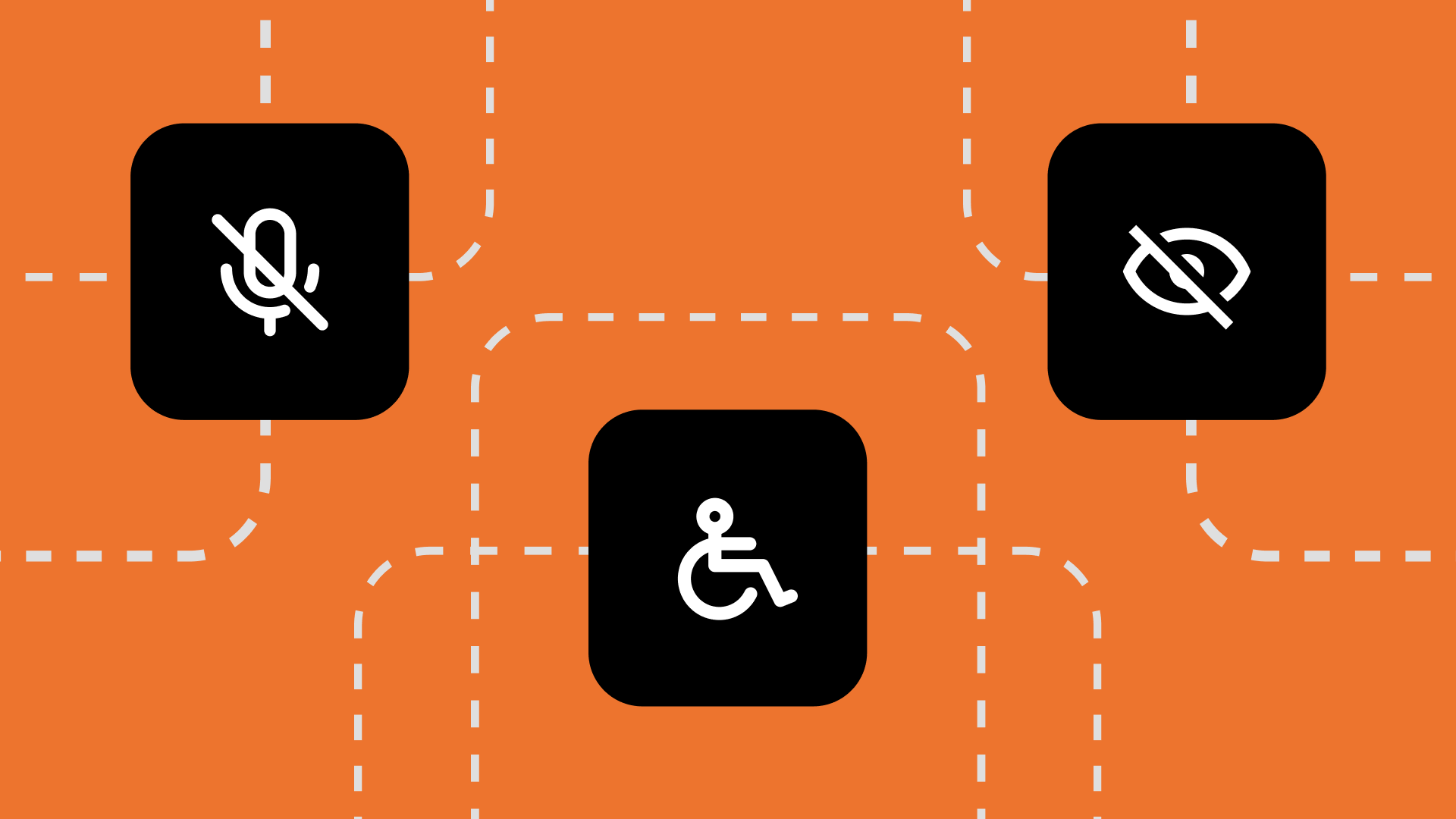Web Accessibility: More Than a Requirement, a Responsibility
Índice de contenidos
ToggleToday, we face an accessibility challenge: many websites are still not designed to be accessible to everyone, which excludes people with functional diversity or any kind of difficulty.
Imagine a visually impaired user trying to navigate a website that doesn’t use proper contrast or fails to offer alternative text for images. This not only leads to a frustrating user experience but can also damage your brand’s reputation.
Implementing web accessibility practices not only supports these users—it also improves your SEO by making your site more search engine-friendly and culturally inclusive.
The Importance of Accessibility
Why is web accessibility crucial today?
The web has become an essential tool in everyday life, and ensuring it is accessible to everyone should be a priority in your digital strategy.
It’s important to note that over 20% of the world’s population lives with some form of disability. Failing to optimize your website for these users isn’t just a missed opportunity—it’s a form of negligence that can limit your reach and online growth.
Additionally, legal regulations in many countries are starting to require web accessibility, making this not only an ethical initiative but also a legal requirement.
Relationship Between Accessibility, UX, and SEO
Accessibility, UX, and SEO: A Powerful Synergy
Web accessibility has a positive impact on both user experience (UX) and search engine optimization (SEO). An accessible site usually features clear structure and intuitive navigation, which benefits all users. Moreover, search engines highly value accessibility and may give greater visibility to sites that implement it correctly.
Inclusive Design Principles in UX
The goal is to create experiences that are accessible to all users, regardless of their abilities or contexts. Some key principles include:
- Perception: Ensure that all essential information is perceivable in some way (visual, auditory, tactile).
- Operability: Make sure all components and navigation can be operated in different ways.
- Simplicity: Keep content straightforward and easy to understand.
- Robustness: Design content to be reliably interpreted by a wide variety of assistive technologies and browsers.
Optimizing Accessibility to Improve SEO
Mejorar la accesibilidad puede tener un impacto directo en tu SEO. Y es tan sencillo como por ejemplo, asegurarse de que todas las imágenes tengan textos alternativos, ya que esto no solo ayuda a los usuarios con discapacidades visuales sino que también permite que los motores de búsqueda comprendan mejor el contenido de las imágenes. Asimismo, utilizar encabezados adecuados y estructura de contenido facilita la indexación de tu sitio y mejora su ranking en los resultados de búsqueda.
Strategies and Tools
Essential Tools for Web Accessibility
Discover the most effective tools to measure your site’s accessibility and learn how to use them:
WebAIM’s WAVE (Web Accessibility Evaluation Tool):
WAVE is a free and easy-to-use tool that allows developers and designers to check the accessibility of their webpages. By entering a site URL, WAVE generates an accessibility report highlighting issues such as color contrast problems, incorrect HTML tag usage (like missing alt attributes), and other elements that may hinder accessibility.
It also provides practical recommendations to fix these errors, significantly improving both UX and SEO by making the site more friendly for search engines and users alike.
AXE Accessibility Checker:
Available as a browser plugin for Chrome and Firefox, AXE is a powerful tool for real-time diagnosis of accessibility issues on web pages. By activating AXE in your browser, you can analyze any page during development or editing, making it easier to identify and fix problems on the spot. This includes verifying correct use of ARIA attributes, ensuring all interactive elements are keyboard-accessible, and more.
Fixing these issues not only benefits users with disabilities but also optimizes the site for search crawlers, potentially improving your SERP rankings.
Google Lighthouse:
Lighthouse is an automated tool built into Chrome that performs audits for accessibility, in addition to other web quality metrics like performance and SEO. Using Lighthouse gives you a comprehensive view of how your site is performing in terms of accessibility and what steps you can take to improve. The accessibility audits check things like text readability, navigability, and screen reader compatibility—all crucial elements of an inclusive UX. Improvements in these areas can directly influence how Google perceives your site, positively affecting your SEO.
These tools will become your greatest allies in making your website more accessible and, by extension, more effective from an SEO standpoint. Implementing them is not just a step toward a more inclusive internet but also a smart digital marketing strategy.
Building an Inclusive Website: Success Stories
Here’s how two major companies, Microsoft and Airbnb, have successfully integrated accessibility into their web design and product strategies—improving not just UX or SEO, but also their ethical reputation as inclusive and accessible businesses.
Microsoft: A Leader in Digital Inclusion
Microsoft has embraced accessibility as a core part of its design philosophy, ensuring that all its products and services are usable by everyone, regardless of physical or cognitive abilities.
By implementing technologies like Windows Narrator, which helps blind or low-vision users interact with the operating system, and accessibility features in their Office suite, Microsoft has not only improved its reputation but also expanded its customer base.
These inclusion initiatives have positioned Microsoft as a leader in corporate social responsibility, proving that accessibility can be a key driver of growth and differentiation in the tech market.
Airbnb: Expanding Markets Through Accessibility
Airbnb has made significant efforts to make its platform more accessible to people with disabilities. This includes improving accessibility on both their website and mobile app, with features such as detailed descriptions of step-free entrances, hallway widths, and availability of assistive devices in listings.
These adaptations have not only helped Airbnb comply with international accessibility standards but have also enhanced the user experience for a large segment of their market—resulting in greater customer satisfaction and user base growth. By prioritizing accessibility, Airbnb has strengthened its commitment to diversity and inclusion, reinforcing its image as a conscious and responsible company.
These success stories demonstrate that web accessibility is a strategic opportunity to innovate, expand into new markets, and improve the user experience—ultimately driving business growth. Integrating accessibility into web and product design isn’t just the right thing to do ethically; it’s also a smart business move.
The Future of Web Accessibility
Looking ahead, accessibility will continue to be a key pillar of success on the web. As technology advances and society becomes more inclusive, websites that embrace accessibility principles will not only meet ethical standards but also attract a broader market segment. Inclusion is the future of web design, and implementing accessible practices now will position you as a leader in the digital age.
At Audax Studio, we ensure all our products are accessible. We personally make sure all critical variables are considered during project development. This meticulous approach guarantees that no detail is overlooked—ensuring every element of a website contributes both to improved accessibility and effective SEO optimization. With Audax Studio, inclusion and accessibility are always at the heart of web design strategy.






